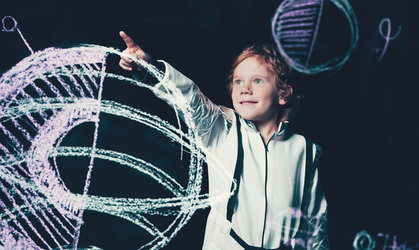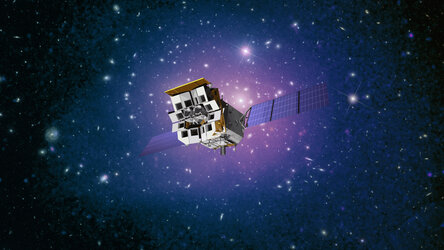100 days of EIRSAT-1
Ireland’s first ever satellite, EIRSAT-1, has reached a remarkable milestone: it has been in space for 100 days! During this time is has completed more than 1500 orbits of Earth, and travelled approximately 65 million km.

EIRSAT-1 was designed, built, and tested by students from University College Dublin participating in ESA Academy’s Fly Your Satellite! programme, which provides university students across Europe the unique opportunity to gain practical experience in a real satellite project. EIRSAT-1 has three main experiment payloads:
- Gamma-Ray Module (GMOD) is a detector to study gamma ray bursts, which are the most luminous explosions in the universe and occur when a massive star dies or two stars collide.
- Enbio Module (EMOD) is an experiment to see how a thermal treatment protects the surface of a satellite when in space.
- Wave-Based Control (WBC) will test a new method of using Earth’s magnetic field to change a satellite’s orientation in space.
While the team can now celebrate a successful commissioning phase, the days after launch were very tense due to a ‘spinning’ phenomenon that can occur to some satellites in orbit.
EIRSAT-1 uses a magnetic attitude control system, where several copper coils are used to create and control a magnetic field onboard the spacecraft. This onboard magnetic field then reacts with the Earth’s magnetic field, creating the torques needed to move the satellite. An important function of this system is to slow down or “detumble” the satellite if it is spinning too fast.
After release from the rocket, EIRSAT-1 was rotating at a gentle five degrees per second. However, by the time the students in Dublin made contact, it was somehow tumbling at 50 degrees per second – and it was getting faster. Tests on the ground had shown that the maximum spin rate from which the satellite could detumble using this system was 30 degrees per second. This meant that there was a very real risk that EIRSAT-1 would spin so fast that it would become impossible to communicate with it.

Fortunately, Fly Your Satellite! gives students access to the world-class scientists and engineers at ESA. Two months before launch, the EIRSAT-1 team completed a Flight Acceptance Review during which an ESA Attitude and Orbit Control Subsystem and Pointing Systems Engineer alerted the team to the potential for this spinning issue. As a result, some thought had already gone into possible solutions, and so the students could spring into action to troubleshoot the problem.
In the lab, the team had access to the engineering model (FlatSat) of EIRSAT-1. This is an almost exact copy of the satellite in orbit. During the project the team had also built a Helmholtz cage. This is a large cage made of copper coils that can be used in the lab to simulate the magnetic fields that the satellite would experience in orbit. With the engineering model placed in this cage, the team could use a technique called hardware-in-the-loop simulation to reproduce the problem and test solutions on ground.
They quickly determined that although EIRSAT-1 was spinning at a concerning rate, they could use the existing system in a clever way to gradually reduce the spin rate of the satellite. This involved switching the polarity of some of the satellite’s actuators and updating the calibration parameters for some of its sensors. After first testing this solution in the lab, a signal was sent to the satellite to update these parameters, which succeeded in slowing the spin and stabilising the satellite.
Fast forward three months, and EIRSAT-1 is functioning very well. All instruments have been switched on and are operating as expected. Data has been received from EMOD, and GMOD is being configured for regular operations.
The mission continues to go from strength to strength, and is testament to the skill and dedication of dozens of students from the EIRSAT-1 team and their ESA mentors. EIRSAT-1 passes within line-of-sight of Dublin around seven times a day, so although it is orbiting 515-km above the ground, it never seems that far from home.
For more updates on EIRSAT-1 and Fly Your Satellite! please visit: https://www.esa.int/Education/CubeSats_-_Fly_Your_Satellite/.


Access the video














 Germany
Germany
 Austria
Austria
 Belgium
Belgium
 Denmark
Denmark
 Spain
Spain
 Estonia
Estonia
 Finland
Finland
 France
France
 Greece
Greece
 Hungary
Hungary
 Ireland
Ireland
 Italy
Italy
 Luxembourg
Luxembourg
 Norway
Norway
 The Netherlands
The Netherlands
 Poland
Poland
 Portugal
Portugal
 Czechia
Czechia
 Romania
Romania
 United Kingdom
United Kingdom
 Slovenia
Slovenia
 Sweden
Sweden
 Switzerland
Switzerland


























